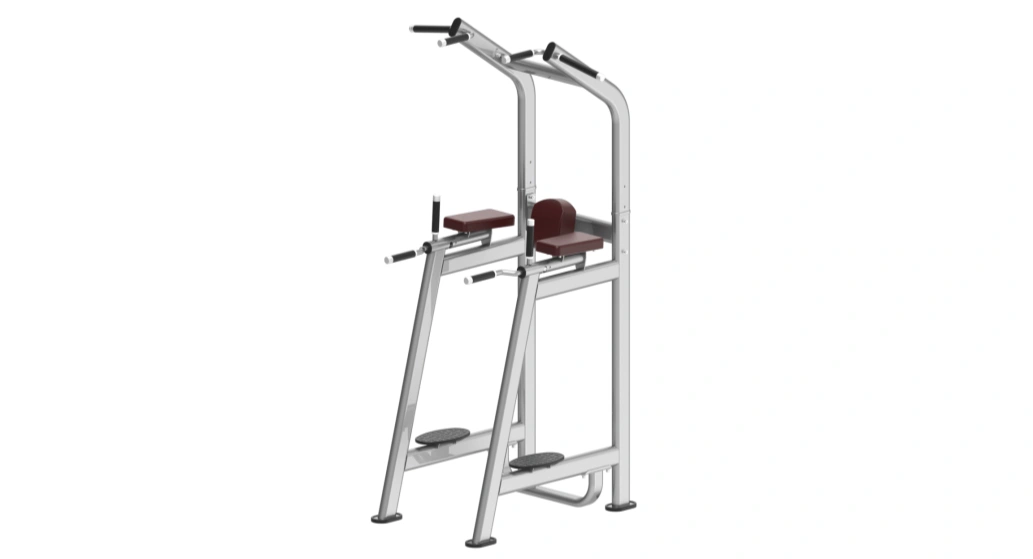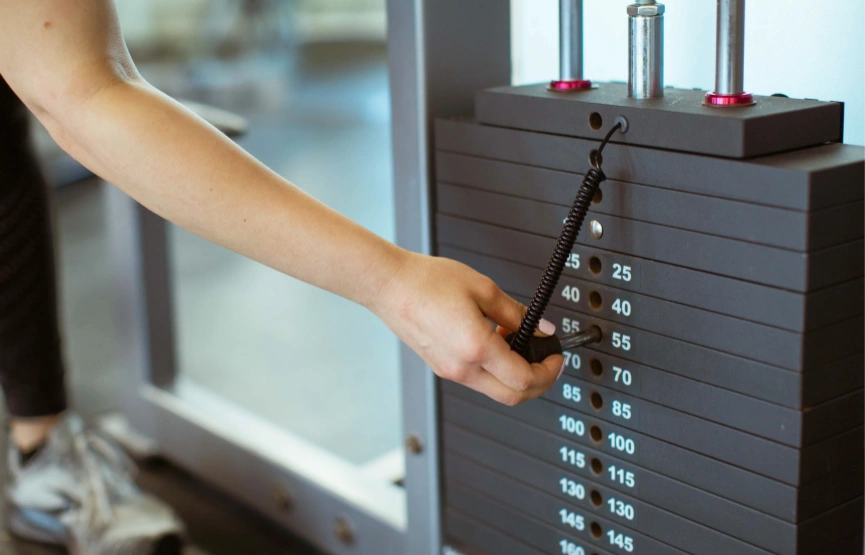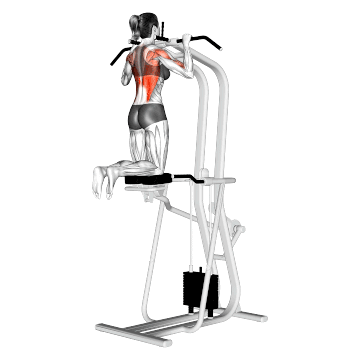
Pull Up Machine Weight can be confusing, especially if it’s your first time using it.
You walk up, look at the numbers — 40, 60, 80 lbs — and just guess.
I’ve been there. Thought I crushed it.
Turns out the machine did most of the work. Classic.
The problem? Most people don’t know what that weight actually means.
And if you get it wrong, you’re either making it way too hard… or way too easy.
Honestly, it’s not about ego.
It’s about knowing how much help you’re getting.
Because on this machine, more weight means more assistance — not more strength.
So in this quick guide, we’ll clear it up.
Pull Up Machine Weight is not what you think it is.
Sounds like it should be the weight you’re lifting, right?
But actually — it’s the opposite. It’s how much the machine is helping you.
Yeah, weird. Confused me too the first time.
So if you thought “heavier means harder”… totally normal.
But with this machine, it’s the other way around.
Alright — here’s the deal.

👉More weight = more help
The higher the number on the machine, the more help it gives you.
Set it to 100 lbs? That means the machine is lifting 100 pounds for you.
So if you weigh 160 lbs, you’re only pulling 60 lbs by yourself.
It’s like someone pushing you up from below. Super helpful, but… not really you doing the work.
👉Less weight = more work
Now, if you set it to 40 lbs? That’s only 40 pounds of help.
So you’re pulling the other 120 on your own.
Much harder. Much closer to a real pull-up.
You’ll feel the difference right away — trust me.
👉Yeah, it works backwards
Most gym machines? You add more weight to make it harder.
This one’s flipped. More weight = easier. Less weight = harder.
Kinda weird at first, not gonna lie. But once it clicks, you’ll never forget it.
👉Don’t let big numbers fool you
Just because someone’s got it set to 120 lbs doesn’t mean they’re crushing it.
That just means the pull up weight machine is doing most of the work for them.
I’ve done it too — felt strong until I realized I was getting a boost the whole time.
Bottom line?
Pull Up Machine Weight = how much help you’re getting.
The bigger the number, the more the machine is holding you up.
Simple once you know. Easy to mess up if you don’t.
Pull Up Machine Weight makes more sense once you know how it works — but picking the right number? Still tricky.
You get that more weight means more help. Cool. But now you’re standing there like, “So… where do I start?”
Totally normal. Here’s how to figure it out without guessing (and without overthinking it).
✅ Start with a range that feels hard — but doable
If you can barely pull one rep? Too hard.
If you’re flying through 15 reps without breaking a sweat? Way too easy.
The sweet spot: you struggle a little, but can still finish 6 to 10 clean reps.
✅ Test it. Adjust it. No one cares.
Try a set. Doesn’t feel right? Change the weight.
That’s not failure. That’s smart training.
Honestly, most people are adjusting when no one’s looking.
✅ How Much Are You Really Pulling? (If You Weigh 160 lbs)
| Machine Setting | You Pull (160 lb bodyweight) | Good For |
|---|---|---|
| 120 lbs | 40 lbs | Day 1 energy |
| 100 lbs | 60 lbs | Getting moving |
| 80 lbs | 80 lbs | Solid challenge |
| 60 lbs | 100 lbs | Strong effort |
| 40 lbs | 120 lbs | Almost real pull-up |
| 20 lbs | 140 lbs | You’re close |
| 0 lbs | 160 lbs | That’s full bodyweight |
Tip: Weigh more or less? Just adjust the math. Logic stays the same.
🚫 Chill — you don’t need to “prove” anything
Choosing a lighter assist doesn’t make you a superhero.
Trying to look strong is how people hurt themselves.
Choose what pushes you — not what feeds your ego.
So you’ve been using the Pull Up Machine for a while.
Cool. You’re getting stronger.
But now you’re staring at that regular assisted pull up bar like it’s judging you.
Everyone else seems to fly up. You? You’re not even sure how to start.
Let me tell you — almost nobody starts with real pull-ups.
We all fake it till we build it.

💪First: Don’t ditch the machine too fast
If you’re still using 80 or 100 lbs of assist, that’s okay.
Start cutting it down slowly.
Maybe just 10 lbs at a time.
You’ll feel it. And that’s the point.
💪Can’t pull up yet? Go down first
Seriously — use the machine to get to the top, then lower yourself slow.
That part — the “negative” — is where real strength shows up.
And it works way faster than you think.
💪Pull-ups aren’t just pull-ups
You’ll need strong arms, sure.
But also your back, core, even your grip.
Do rows. Dead hangs. Anything that helps you stay tight and not wiggle like a fish.
💪Most of all — stop comparing
That guy next to you? Sure, he’s knocking out ten reps like it’s nothing.
But who knows — maybe he’s been at this for years.
Your body, your pace.
One clean rep > ten sloppy ones.
Assisted Pull Up Machine Weight isn’t the big mystery it feels like at first.
It’s just assistance. A tool. Something to help you get stronger, one rep at a time.
Don’t rush to hit zero. Don’t guess.
Start where you are, adjust as you go, and keep showing up.
The numbers don’t matter nearly as much as the effort behind them.
Whether you’re using 100 lbs of help or none — you’re still doing the work.
And that first unassisted pull-up?
You’ll get there. Probably sooner than you think.
Related articles:
How to use assisted pull up machine
I’m Jessica Camp, a passionate fitness enthusiast and the creative force behind Inpek Fitness’s content. With over a decade in the fitness industry, I combine my expertise in exercise science with a deep knowledge of commercial gym equipment. I’m dedicated to promoting health and wellness by sharing valuable tips, training techniques, and the latest trends in Pin Loaded Machines, Plate Loaded Machines, Multi Function Gym Machines, Gym Multi, and Free Weights. Whether you’re a gym owner or a fitness enthusiast, my articles are crafted to inspire and empower you to reach your fitness goals. When I’m not writing, I love working out and exploring innovative fitness solutions.
Looking to enhance your gym with premium equipment? Have inquiries or ideas? Complete the form below to engage with our expert team. We’ll work with you to realize your fitness facility goals efficiently and effectively.